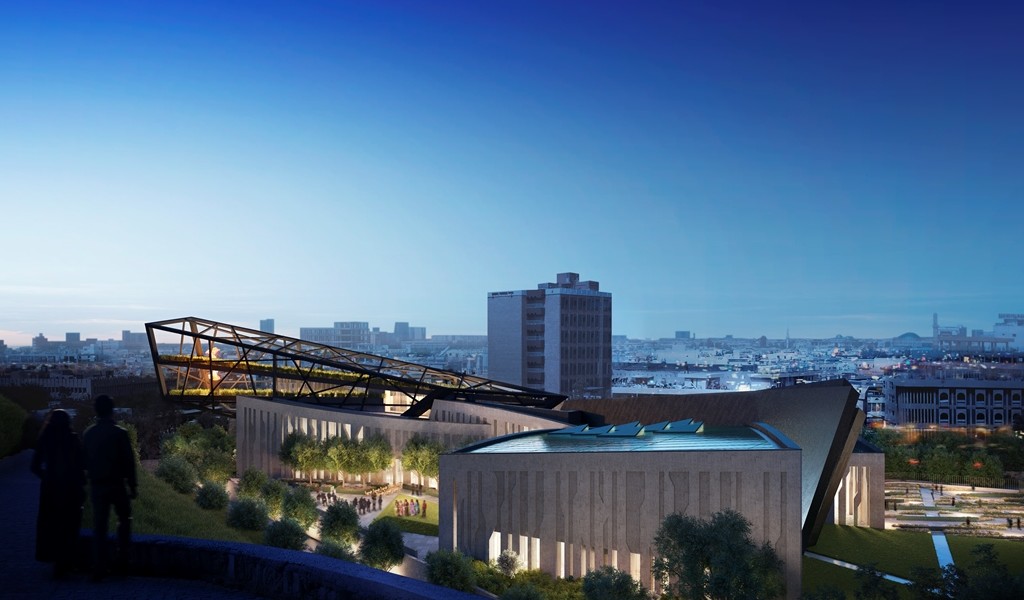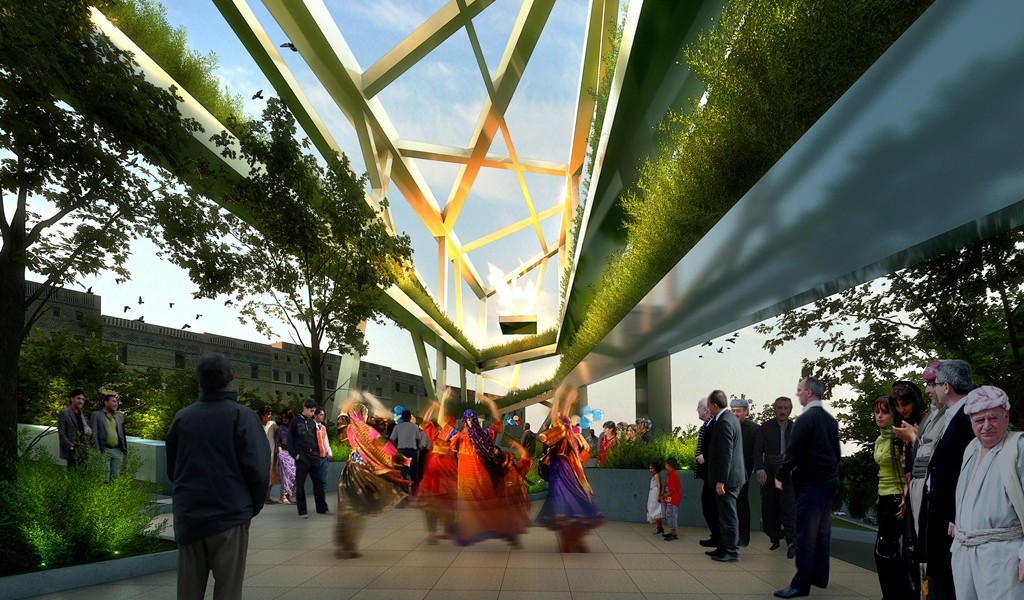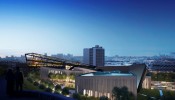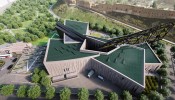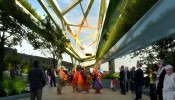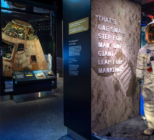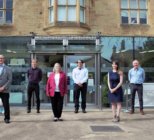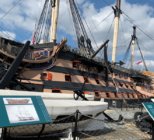Studio Daniel Libeskind (SDL will present the design for the Kurdistan Museum that will create the first major center in the region for the history and culture of the Kurdish people.
Situated at the base of the ancient Citadel, in the center of Erbil, Iraq, the 150,000 square-foot museum will feature exhibition spaces for both permanent and temporary exhibitions, a lecture theatre, state-of-the-art multimedia educational resources, an extensive digital archive of Kurdish historical assets, as well as community center and landscaped outdoor spaces for public use.
The form of the museum is created by four interlocking geometric volumes that represent the Kurdish regions: Turkey, Syria, Iran, and Iraq. The volumes are intersected by a line that is broken into two angular fragments, representing the past and future of Kurdistan.
“The museum aims to convey the spirit of the Kurdish people, their rich culture and the future of Kurdistan,” said Libeskind. “The design had to navigate between two extreme emotions: sadness and tragedy, through the weight of history, and of joy and hope, as the nation looks to the future.”
The two fragments create an emotive duality: a heavy and opaque mass, the Anfal Line, which symbolises the genocide under Saddam Hussein between 1986-1989 ; and the Liberty Line, a lattice structure filled with greenery that ascends towards the sky and culminates with an eternal flame – a powerful symbol in Kurdish culture.
At the junction between the Anfal and Liberty Lines is an open-air courtyard conceived as a tranquil and meditative space at the heart of the museum. The courtyard references those found in the Citadel and throughout the ancient, urban neighbourhoods of Erbil.
There is a water feature that extends from the landscape through the museum, bringing to mind the rivers and fertile valleys of Kurdistan. The landscape offers performance spaces, café seating, and picnic grounds where people can gather.
The Kurds in Iraq are currently engaged in fighting the Islamic State (ISIS) and construction of the museum will begin once the region is stabilised and the threat posed by ISIS is minimised.
“Our ongoing work in the Middle East and work in Europe and North America often deals with issues of cultural conflict and identity and this project was a perfect fit desired to explore the human experience through heritage and cultural projects,” said Alisdair Hinshelwood, hsd director and designer. “It also allowed us to work again with SDL and explore the opportunities of evolving physical and emotional narratives that would populate the dynamic journey through the building.”
Hinshelwood said at the core of the project is the Memory Programme that has been recording and collecting the personal testimony of the Kurds and their experiences of both the horror and joy of the road to the genocide of Anfal and through to the future. “The integration of audio, static and moving image and objects of dramatic personal significance in a multi-lingual context have demanded an interpretive response that is multi-cultural, multi-ethnic and multi-generational. It has been a privilege to work with material that tells a story that is essentially unknown to the rest of the world.”
The Kurdistan Regional Government’s is inviting outside financial support for the project.
Kurdistan Museum international team:
– Studio Libeskind (US) Architect
– Haley Sharpe Design (UK) Exhibition Designer
– Expedition (UK) Structural Engineer
– Atelier Ten (US) Mechanical and Environmental Engineer
– Jackson Coles (UK) Project Managers
– Royal Botanic Gardens, Kew (UK) Consultants for Landscape and Botany
– RWF World UK/Iraq) Development, Management and Content Production
– With Tim Renwick as Project Director (London Eye, London 2012 Olympic village)
Images
All photographs (c) Studio Libeskind


